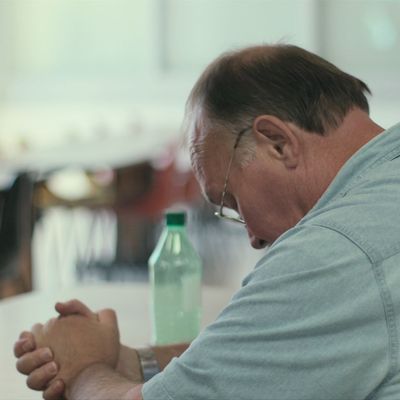
A young woman is killed violently. A man is charged with her murder, even though he insists he is innocent. Attempts to exonerate him reveal complicated realities about police corruption and the degree to which evidence can be manipulated for the sake of wrapping up a case.
What true crime series have I just described? Is it The Staircase? Making a Murderer? The first season of Serial?
Technically, I’m talking about The Innocent Man, the latest addition to the Netflix true-crime library that’s based on the first nonfiction book by John Grisham. But the fact that the same basic description could easily apply to several other shows suggests the media landscape could be hitting its limit on a particular type of true crime, if it hasn’t already.
Pop culture has had a long, continuing fixation with stories about dead girls, as both true and fictional crime stories have proven. But the dead girl/wrongly accused man trope is a specific twist on that familiar construct and one that has become the most recognizable type of true crime. Satires like American Vandal and Trial & Error have already highlighted the clichés of this subgenre. And the plodding, less buzzy second season of Making a Murderer suggests that every series of this type won’t necessarily capture the public’s attention. But that doesn’t seem to be stopping networks and platforms like Netflix from making more of these kinds of shows, because, generally speaking, audiences gravitate toward them. Also, in Netflix’s case, the more you can serve up something that seems very similar to the thing that a person just binge-watched, the better.
Which brings us to The Innocent Man, which focuses on a pair of murders that took place in the early 1980s in the small town of Ada, Oklahoma. First, in December of 1982, a local bar waitress named Debbie Carter was savagely raped and killed in her walk-up apartment. Two years later, in August of 1984, a convenience-store clerk named Denice Haraway went missing and was eventually found dead. Each crime led to a pair of men — Ron Williamson and Dennis Fritz in the Debbie Carter case, Tommy Ward and Karl Fontenot in the Denice Haraway case — being implicated and charged with murder. But all four of those alleged killers contended they were not responsible for the women’s deaths.
Like Making a Murderer, The Innocent Man digs into the shoddy police and prosecutorial work associated with both investigations as well as the appeals pursued by all four of the accused. Even though the circumstances involving the convictions of Steven Avery and Brendan Dassey differ from those surrounding the convicted quartet in The Innocent Man, the parallels between the two stories are tough to ignore. Like Dassey, Ward and Fontenot say they were coerced in to recording in false confessions. Various figures, including attorneys and locals, speak on-camera as dramatic flourishes in the musical score add dramatic heft to their words. Even the opening titles, with their imagery of rural America set to the tune of Zwan’s emo-style cover of “Number of the Beast,” is so evocative of this subgenre it comes across as comical.
That’s the problem with The Innocent Man and, frankly, any series that tries to cover similar narrative ground: We’ve seen this type of story told so many times in recent years, and with such aesthetic similarities, that we recognize its rhythms before the series can even hit a first note. Even though Ross M. Dinerstein and Clay Tweel developed the series from a Grisham book that came out back in 2006, the fact that it’s arriving on the TV scene at this point in 2018 makes it look like a knockoff instead of a pioneer. It also doesn’t help that it’s plagued by cheesy staged reenactments and a slow pace that never fully draws in the audience.
At a certain point, I even found myself laughing at some of the details. One of the initial suspects is named Odell Titsworth? Two of the men who pop up as potential suspects in the Haraway case are named Billy Charley and Jim Bob Howard? Jim Bob?! It’s so stereotypical of a series like this that you find yourself chuckling, even though that’s the opposite of what The Innocent Man wants you to do.
Then you remember that these murdered women were real people, and the men who had their lives ruined by serving time for crimes they didn’t commit are real people, too. True crime is called “true” because the details in it are real. We should feel the weight of that every time we watch a show like this. But because so many shows of this type exist, it’s become easier and easier to feel desensitized to the injustices they are trying to highlight.
The Innocent Man is not as well done as other shows of its type, and that’s its biggest problem. But its shortcomings are a reminder that if you’re going to make a true-crime series, you need to make sure that there’s something really unusual and compelling about the material or your approach to it. It is an American tragedy that so many women are killed, and that some men have been unfairly railroaded by a system thirsty to hold someone accountable. But unless an especially unique case fits in that category, or the filmmakers take a groundbreaking approach to dissecting a narrative like the one that plays out in The Innocent Man, I’m not sure we need to see many more shows like this. They may be good for Netflix algorithms, but I’m not sure they’re ultimately increasing our capacity to empathize with victims in all aspects of our deeply flawed criminal-justice system.


